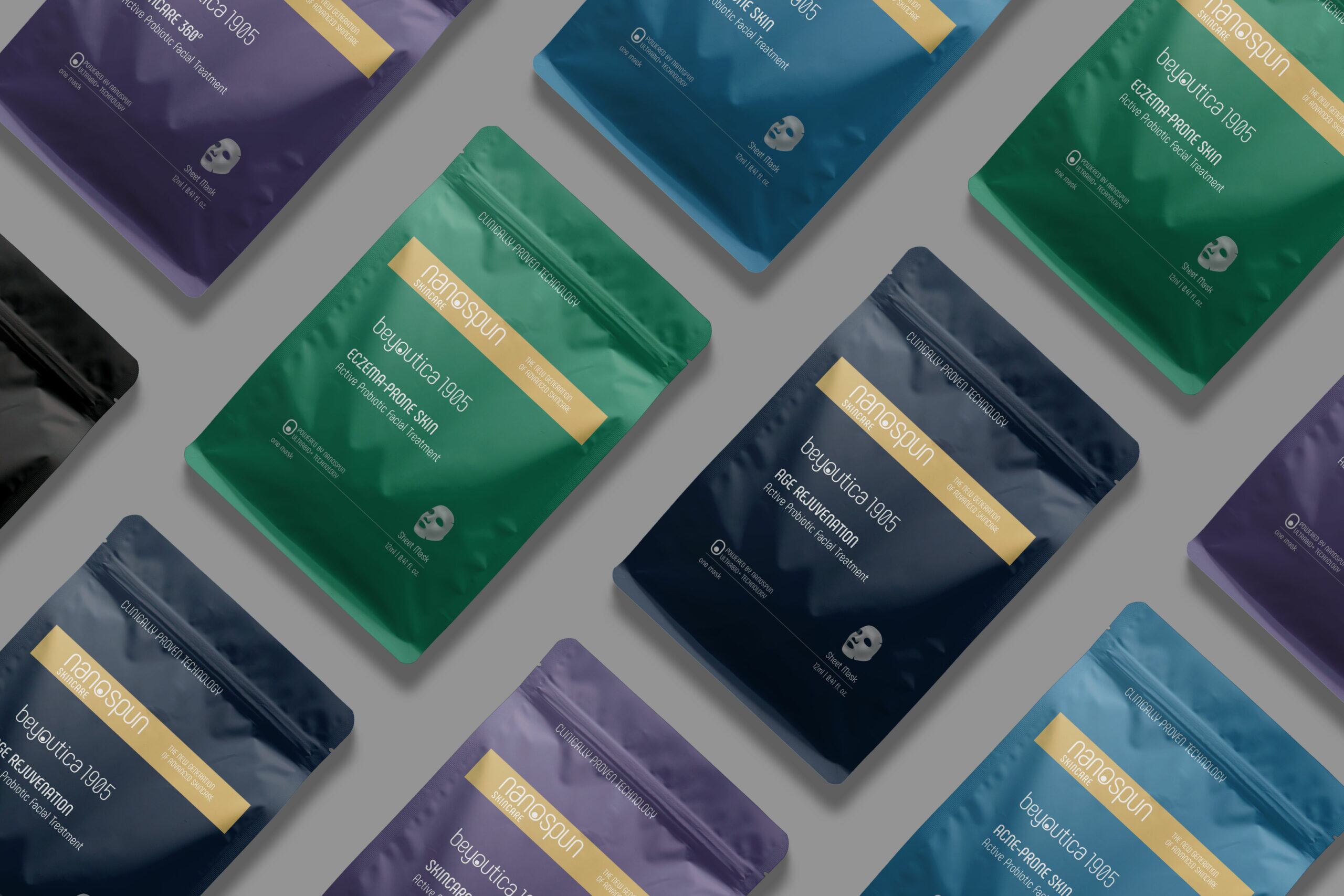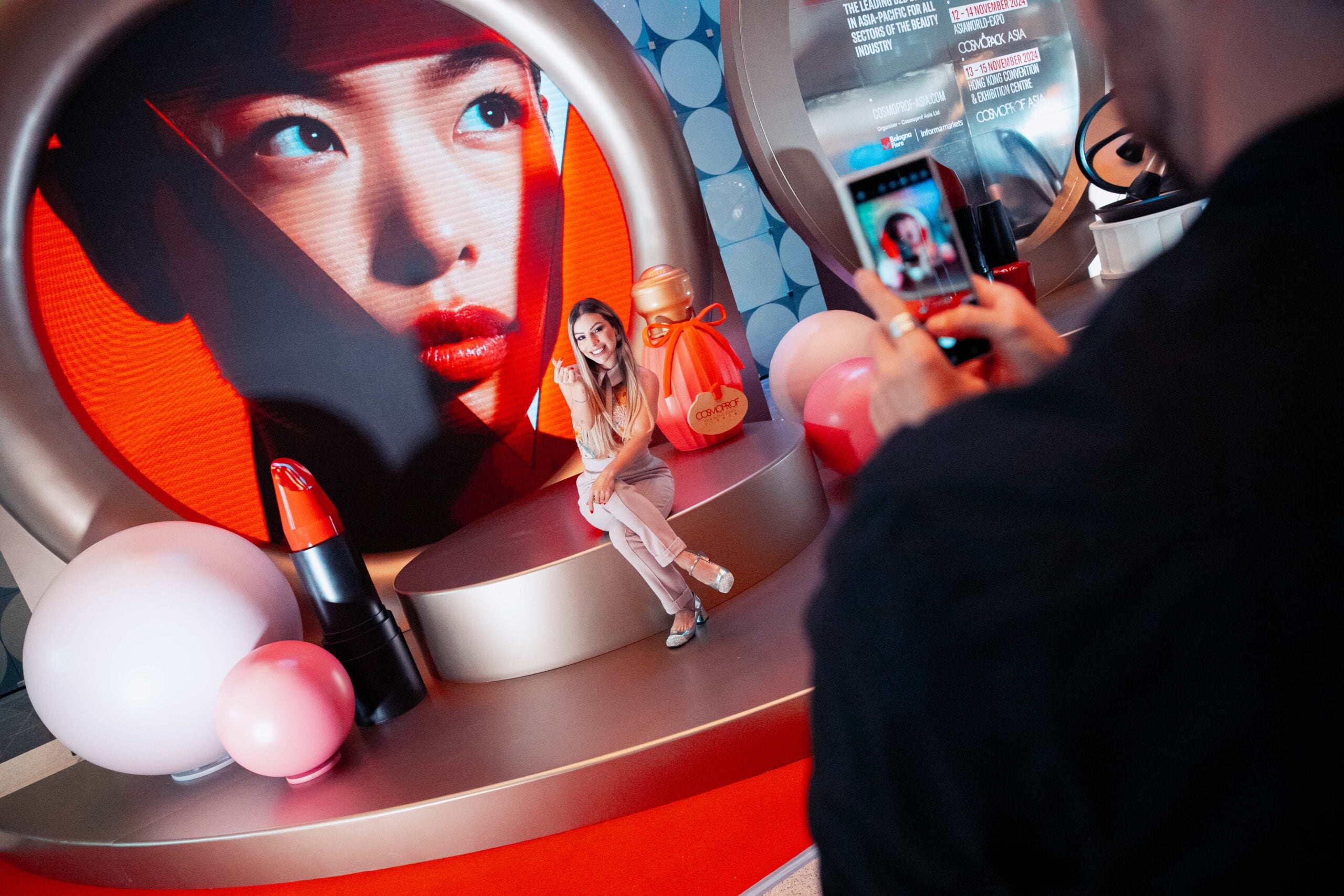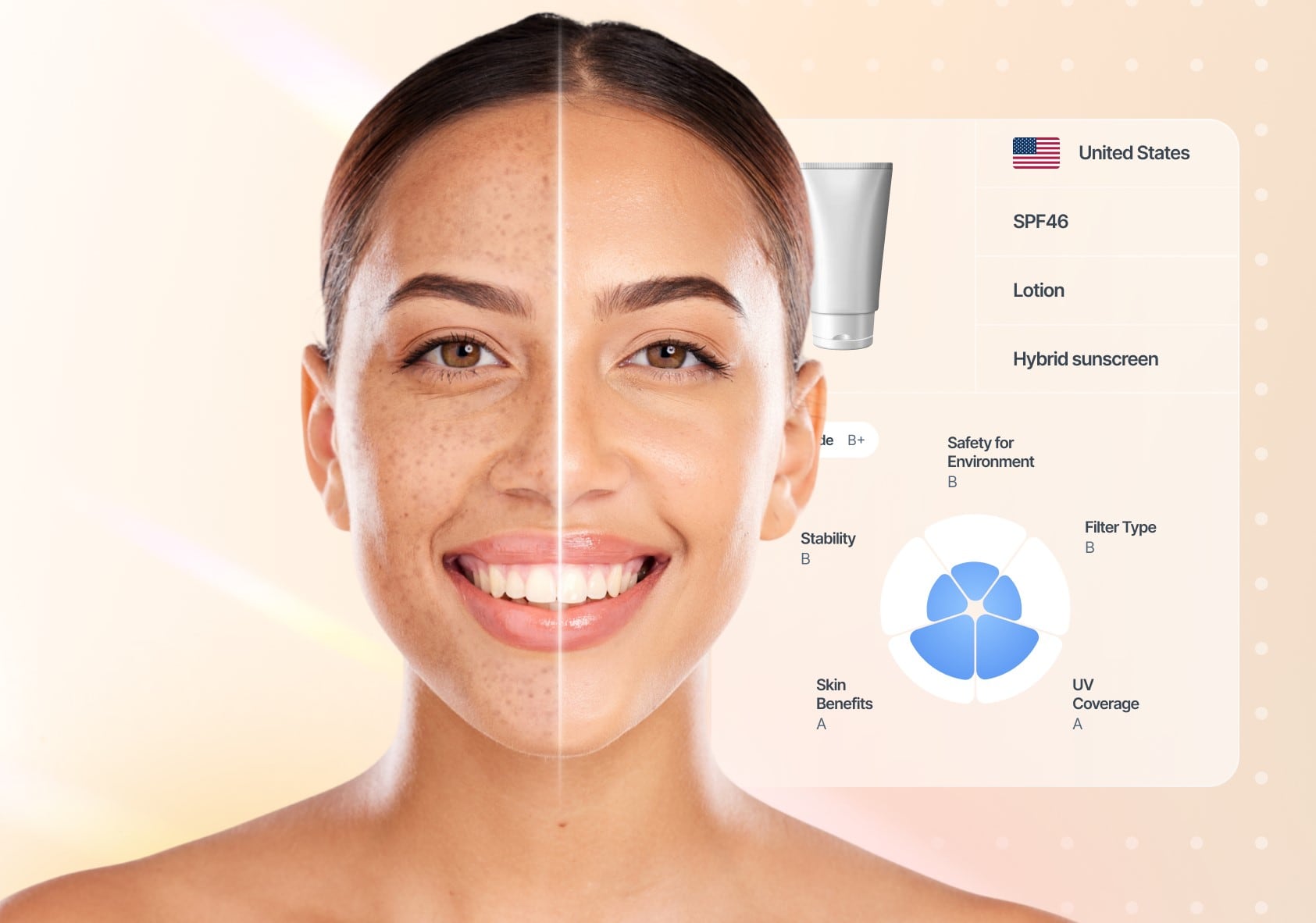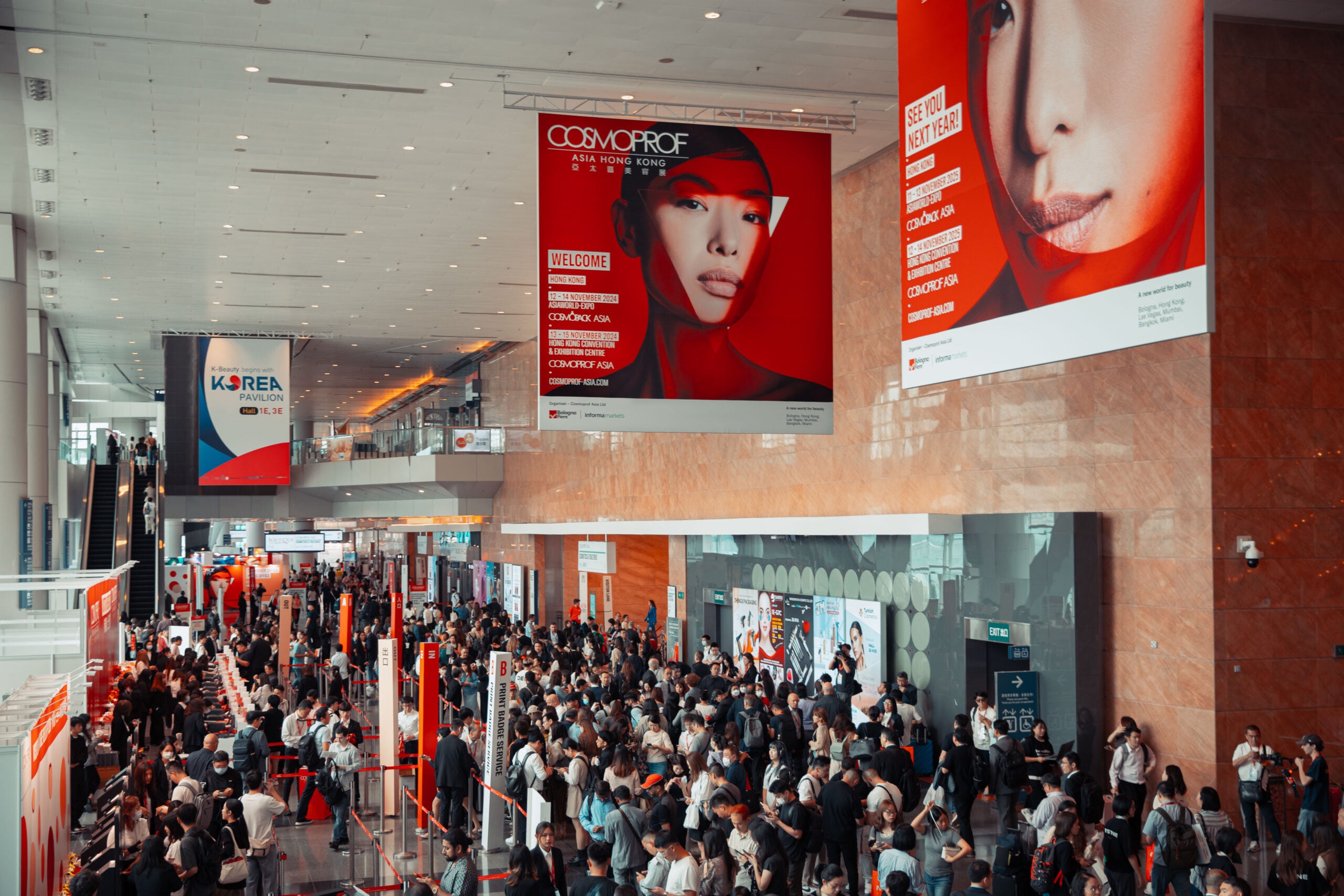The incorporation of live microorganisms into personal care formulations has long presented a technical and regulatory challenge, particularly in terms of stability, shelf life, and real-time efficacy.
According to a recent market analysis report from Grand View Research, the market for microbiome-supportive skin care is projected to grow at a CAGR of 11.5% to reach a market size of over $800 million in 2030, pushing industry stakeholders to explore new pro- and postbiotic ingredient delivery methods to achieve greater precision and functional impact.
NanoSpun, a materials science startup spun out of academic research at the Technion–Israel Institute of Technology, is one such company that has developed a live-cell tissue platform designed to produce active ingredients at the point of use. The company recently launched its first commercial skin care applications using this platform and has secured regulatory approval in key markets, including the US, UK, and EU.
In this CosmeticsDesign US Q&A, we spoke with Ohad Bendror Bendas, founder and CEO of NanoSpun, who discussed the technological challenges behind developing a shelf-stable, consumer-activated system for delivering postbiotics, as well as the potential implications for decentralized manufacturing and targeted skin care.
CDU: The on-demand production of active ingredients in the consumer’s home is a radical departure from centralized manufacturing. What were the biggest R&D challenges in enabling this shift, particularly in maintaining cell viability and ingredient efficacy?
OBB: The development of any disruptive technology always seems to involve seemingly complex and unsolvable problems that can eventually be solved by the right team. In our case, the team faced four complex challenges.
The first challenge was keeping the cells alive and viable while integrating them into the manufacturing process. Many types of cells are relatively delicate, and the manufacturing processes can be inherently harmful to them due to factors such as heat and toxicity.
This required a very innovative and effective multi-level design to separate the cells from the overall physical structure during manufacturing.
The second challenge was ensuring the long-term cell stability and viability of the cells within the physical structure itself during post-production. The design of our production processes includes specific stages where we bring the cells into a state of very low activity.
In essence, the cells are alive but dormant and ready to be activated. We continuously test our products, and our current product shelf life already exceeds 24 months. This means that during long-term storage, the cells remain alive and fully viable. This is an extraordinary achievement!
The third challenge is creating products that include meaningful concentrations of liveactive cells. When I say meaningful concentrations in probiotic skin care, it means at least 100 million cells per square centimeter of tissue.
With the design of our unique production processes and production machinery, NanoSpun succeeded in reaching an inconceivable production level of more than one billion probiotic cells per square cm of tissue!
The fourth challenge we solved was maximizing the bioavailability of the cell by-products. This is where things got even more interesting.
Inspired by the design of the microprocessor, which we know led the information technology and now the AI revolution, the NanoSpun living tissues are actually bio-processors, functioning as biological working units. This is the essence of NanoSpun’s technology and what stands behind our “NanoSpun Technology Inside” concept.
It highlights our unique ability to generate the desired active ingredients, on demand and in situ. In the case of skin care, we designed and manufactured the industry’s first-ever skin tissue made entirely from living probiotics.
It is activated by the user at home or in a clinic to generate unoxidized postbiotics, which are then delivered to the skin using the same tissue that initially generated the postbiotics. In fact, the postbiotics can also be delivered to the skin by the user as a serum.
In essence, we have decentralized the biotech process and moved the manufacturing of active ingredients – the postbiotics - from the factory into the hands of the users, at home or in the clinic, ensuring that the postbiotics maintain their peak efficacy to maximize skin health.
CDU: How does the activation process work for the consumer, and what makes the resulting postbiotics more effective than conventional formulations containing oxidized or pre-processed actives?
OBB: Probiotics and their by-product, postbiotics, are at the center of attention of the global skin care industry. Clearly, probiotic and postbiotic solutions are integral to a healthy, natural, and holistic approach to skin care.
However, due to inherent technical limitations, the current approach taken and the products offered by the skin care industry cannot fully deliver on the huge potential of probiotic skin care. It goes back to the nature of cells and the manufacturing constraints that the biotechnology industry has faced in creating end-products made from live cells: viability, stability, and shelf life.
Current probiotic skin care products in the market are typically offered under three modalities: as prebiotics, in an attempt to nourish the population of probiotics that already exist on your skin but are damaged on a continuous basis due to pollution, soaps, cosmetics and other factors, as postbiotics, which are the valuable proteins secreted by probiotics that nourish and heal the skin in a healthy skin microbiome, or as “freebiotics”, a term coined by NanoSpun which refers to probiotics that are isolated and protected using older and ineffective microencapsulation methods and then simply added to creams and serums.
However, prebiotics applied to the skin have not proven their effectiveness, as they do not address the real problem – the daily, ongoing damage to the microbiome. Postbiotics are highly unstable and sensitive molecules that oxidize rapidly, losing their efficacy within days, hours, or even minutes.
And encapsulated freebiotics/probiotics have a very short lifespan and die off quickly after being added into oil or water-based solutions. Until NanoSpun, the technology has been insufficient, preventing the industry from realizing the full potential of liveactive probiotics and active postbiotics for the skin.
NanoSpun solved these challenges to create revolutionary live probiotic skin care products with an extensive shelf-life, high concentrations of probiotics, and, as you stated, an on-demand and ‘in situ’ production of active ingredients – the postbiotics – that ensures maximum efficacy of the unoxidized protein molecules that deliver extensive benefits to the skin.
From the user perspective, NanoSpun products are designed to be engaging, fun, and an overall rewarding experience. Our live-active probiotic sheet masks are very simple to use. The sachet is opened, and our proprietary and natural plant-based activation solution is added into the sachet.
The uniquely designed sachet is then re-sealed and slipped into a small activation heating unit, included in the kit, where it is exposed to a low heat of 37-40℃ for 30-60 minutes. The combination of activation solution and low heat stimulates the high concentration of probiotics within the tissue to secrete fresh postbiotics.
After heating, the sachet is opened, and the postbiotic-soaked mask is removed, unfolded, and applied directly to the skin. After 10-15 minutes, the skin treatment process is complete, and the mask is removed.
The design and the physical properties of the sheet mask are another unique and highly compelling element to our skin care solutions, delivering the ultimate skin care experience. The sheet mask is ultrathin and transparent with exceptional adhesion to the skin. It is simple to apply and remove with an overall premium and luxurious feel.
CDU: You’ve described the sheet masks as “mini-biological processors.” How did you design this delivery system, and what technical innovations enable its functionality in a consumer setting?
OBB: NanoSpun products are designed with the vision and mission to harness the power of biology and produce health and wellness products that improve care and treatment outcomes. We succeeded in creating a user experience as simple and straightforward as adding a solution into a sachet to magically produce fresh postbiotics. This is the beauty of the NanoSpun technology.
It transforms deep-tech and very sophisticated technology into a simple and easy-to-use solution.
Furthermore, the design of the tissue and the overall manufacturing processes allow NanoSpun and our partners to select any type of strain or consortia of probiotics, or any other cell type. This is very important, as it allows for targeting specific consumer needs and skin conditions by selecting cells that are scientifically proven to treat those conditions or achieve a desired effect.
In skin care, it allows us to offer probiotic solutions tailored to specific skin issues, including acne, eczema, aging, and hydration. This is what we will be offering in 2025 and 2026. And we are already working on expanding our products into hair care, scalp treatment, and feminine health solutions
CDU: With clinical testing already showing strong results, what can you share about the formulation and testing process, and how NanoSpun ensures product safety, stability, and regulatory compliance?
OBB: Well, to start, it is a very exciting time for us as NanoSpun’s live-active probiotic solutions have been approved for sale in the EU, UK, and USA. This provides an exceptionally strong validation of the safety and stability of our products.
A healthy skin microbiome contains billions of essential probiotics that protect the skin and maintain its health. However, the skin microbiome is constantly damaged by daily exposure to pollution, soaps, and cosmetics.
Simply put, NanoSpun is treating, restoring, and protecting our skin just as nature intended. We are bringing to the skin what is already provided by nature but was destroyed by modern life. I mean, we didn’t invent probiotics, but we did invent a technology that allows us to truly harness this natural, amazing power.
We have robust testing processes that utilize both in-vivo clinical trials and in-vitro lab testing to ensure our products perform as designed. Our products are made with INCI ingredients, and we do not use any preservatives.
CDU: Looking beyond skin care, how is NanoSpun adapting this advanced materials platform or other applications like hair care, scalp care, and therapeutic treatments, and what opportunities do you see for partnership or licensing within the beauty and personal care space?
OBB: This is a great question that is going to the core of the NanoSpun revolution. The applications of our technology are far-reaching, and our R&D teams are already very busy exploring and evaluating opportunities for continued industry disruption.
For example, we have exciting products in the pipeline for scalp and hair treatment that will be available at the beginning of 2026. And we are well on our way to launching a revolutionary line of feminine health products that leverages both the production of fresh postbiotics and the delivery capabilities of our tissues.
We also view our technology as the enabler of emerging AI-powered beauty and diagnostic solutions. AI-powered beauty has arrived, and several AI diagnostic tools and microbiome testing platforms are already on the market.
These platforms provide valuable insights into the composition and health of the skin microbiome and can even predict future needs.
But they fail to offer any tangible skin care solutions that enable the industry and consumers to act on the data. Without an effective solution to address the deficiencies uncovered in the skin, the data by itself is not actionable and therefore not really helpful.
This is the essence of our advanced skin care brand, beyoutica 1905, which is designed to empower professionals and consumers to act on this emerging data by offering tailored and personalized solutions to enhance their skin health.





